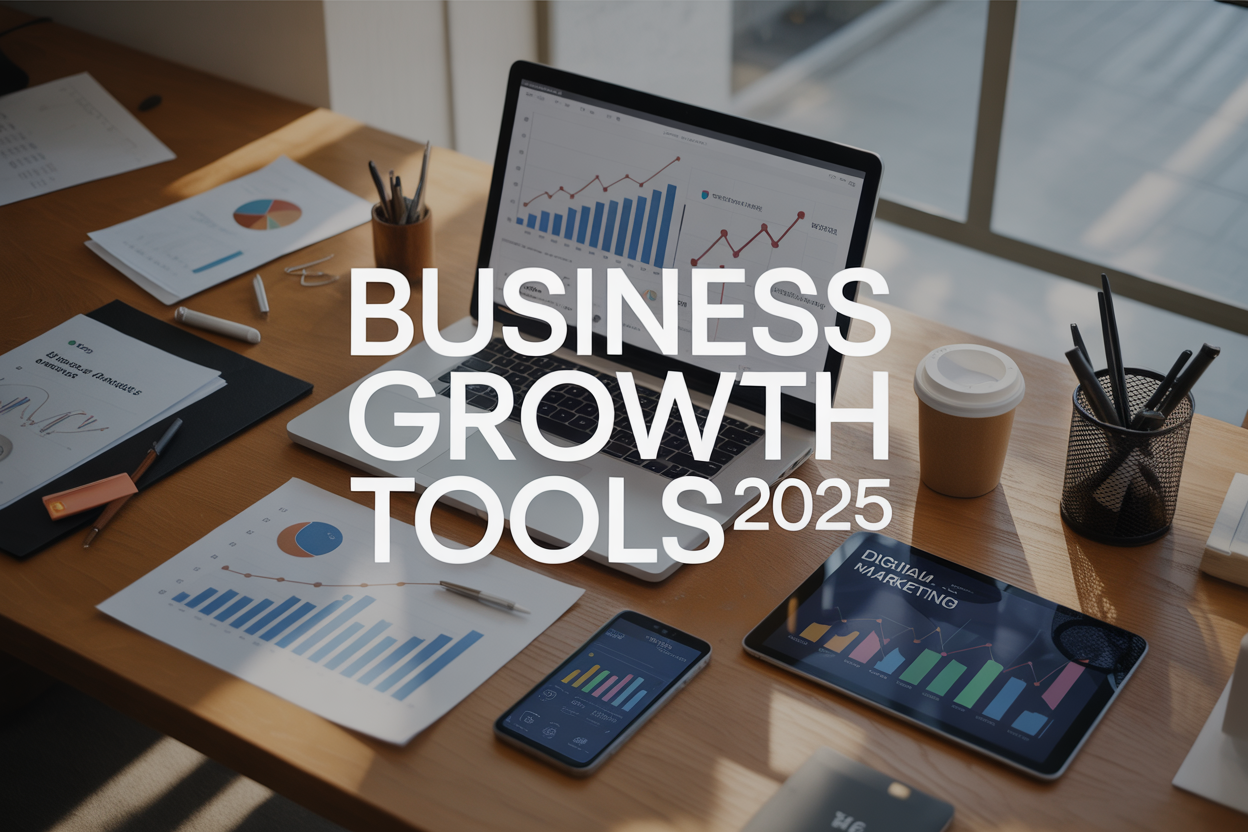
Small business owners know that picking the right tools can make or break their growth plans. With new technologies launching every month, finding the best tools for small business growth in 2025 feels overwhelming when you’re already juggling a million things.
This guide is for small business owners, entrepreneurs, and startup teams who want to grow without breaking the bank or drowning in complicated software. We’ll cut through the noise and show you exactly which tools deliver real results.
You’ll discover customer relationship management systems that actually boost your revenue, digital marketing tools that give you clear ROI instead of just pretty reports, and communication platforms that keep your team connected without the endless meetings. We’ll also cover the e-commerce platforms that make selling online simple, even if you’re not tech-savvy.
Ready to stop guessing which tools work and start growing your business with confidence? Let’s dive in.
Customer Relationship Management Systems for Revenue Growth
Top CRM Solutions for Small Business Revenue Growth
The best CRM software for small business operations can transform how you manage customer relationships and drive sales. HubSpot CRM offers a free tier perfect for startups, while Salesforce Essentials provides advanced automation for growing teams. Pipedrive excels at visual sales pipeline management, making it easy to track deals from prospect to close. Zoho CRM integrates seamlessly with other business tools, creating a unified workspace. These revenue growth tools small business owners need include lead scoring, email automation, and detailed analytics that reveal which customers generate the most profit and which marketing campaigns deliver results.
Key Features That Drive Revenue
Modern CRM platforms go beyond simple contact management. Look for systems that offer automated follow-up sequences, customizable sales pipelines, and integration with your existing small business growth tools 2025. The most effective solutions provide real-time reporting dashboards that show conversion rates, deal velocity, and customer lifetime value. Mobile accessibility ensures your sales team can update records and respond to leads instantly, whether they’re in the office or meeting clients on-site.
ROI Measurement and Analytics
Smart CRM implementation focuses on metrics that matter. Track lead-to-customer conversion rates, average deal size, and sales cycle length to identify bottlenecks in your process. The best systems generate reports showing which lead sources produce the highest-value customers, enabling you to allocate marketing budgets more effectively. Set up automated alerts for high-value prospects and create scoring systems that prioritize your hottest leads.
Digital Marketing Tools That Maximize ROI
Social Media Management Platforms
Successful small businesses need streamlined social media management to reach customers where they spend time. Hootsuite and Buffer lead the pack for scheduling posts across multiple platforms, while Canva provides drag-and-drop design tools for eye-catching visuals. These digital marketing tools ROI becomes clear when businesses track engagement metrics and conversion rates. Sprout Social offers advanced analytics to measure which content drives actual sales, helping small business owners optimize their social strategy and maximize their marketing budget for better returns.
Email Marketing Automation
Email marketing delivers the highest ROI among digital channels, with platforms like Mailchimp and ConvertKit leading the charge. These tools segment audiences automatically, send personalized campaigns based on customer behavior, and track open rates plus click-through performance. Small business growth tools 2025 must include robust email automation features that nurture leads without constant manual effort. ActiveCampaign combines email marketing with CRM functionality, allowing businesses to create sophisticated customer journeys that convert prospects into loyal buyers while maintaining personal connections at scale.
Search Engine Optimization Tools
Organic search traffic provides sustainable growth without ongoing ad spend. SEMrush and Ahrefs help small businesses identify profitable keywords, track competitor strategies, and monitor their search rankings. Google Analytics and Search Console offer free insights into website performance and user behavior patterns. These business growth software solutions reveal which content attracts visitors and converts them into customers. Local businesses benefit from tools like BrightLocal for managing online reviews and local citations, ensuring they appear prominently in “near me” searches that drive foot traffic.
Pay-Per-Click Advertising Platforms
Google Ads and Facebook Ads Manager remain essential for businesses needing immediate visibility and measurable results. These platforms offer precise targeting options based on demographics, interests, and online behavior patterns. Microsoft Advertising provides access to Bing users often overlooked by competitors. Smart bidding strategies and conversion tracking help optimize campaigns for maximum profitability. Small businesses should start with modest budgets, test different ad variations, and scale successful campaigns gradually while maintaining positive return on ad spend ratios.
Communication and Collaboration Platforms
Essential Communication Tools for Remote Teams
Small business communication platforms have become the backbone of modern entrepreneurship, enabling seamless collaboration across distributed teams. Slack dominates with its channel-based messaging system, while Microsoft Teams integrates perfectly with Office 365 for document sharing and video conferencing. Zoom remains the gold standard for video meetings, offering reliable connections and screen sharing capabilities that keep remote teams connected. These collaboration tools for small teams streamline workflows, reduce email clutter, and create centralized hubs where projects, files, and conversations live together, making them indispensable small business productivity tools for companies scaling their operations in today’s hybrid work environment.
Project Management and File Sharing Solutions
Modern small business growth tools 2025 require robust project management capabilities that go beyond simple task lists. Asana and Monday.com excel at visual project tracking with customizable workflows that adapt to different business needs. Google Workspace provides comprehensive file sharing with real-time document collaboration, while Dropbox Business offers enterprise-grade security for sensitive files. Notion combines project management with knowledge base functionality, creating all-in-one workspaces where teams can manage projects, store documentation, and track progress. These platforms eliminate version control issues and ensure everyone stays aligned on project deliverables and deadlines.
Video Conferencing and Virtual Meeting Tools
Professional video conferencing has evolved beyond basic calling to include advanced features that rival in-person meetings. Zoom’s breakout rooms and whiteboard functionality facilitate interactive workshops, while Google Meet integrates seamlessly with calendar systems for automatic scheduling. Microsoft Teams offers persistent chat rooms that continue conversations after meetings end, creating ongoing dialogue around specific topics. WebEx provides enterprise-level security features that protect sensitive business discussions. These tools have become essential business growth software, enabling companies to maintain client relationships, conduct team meetings, and deliver presentations regardless of geographical constraints.

